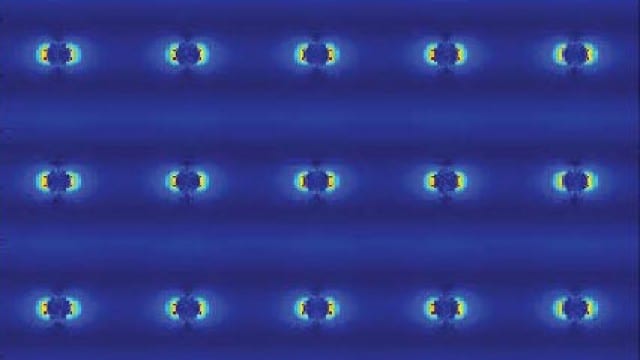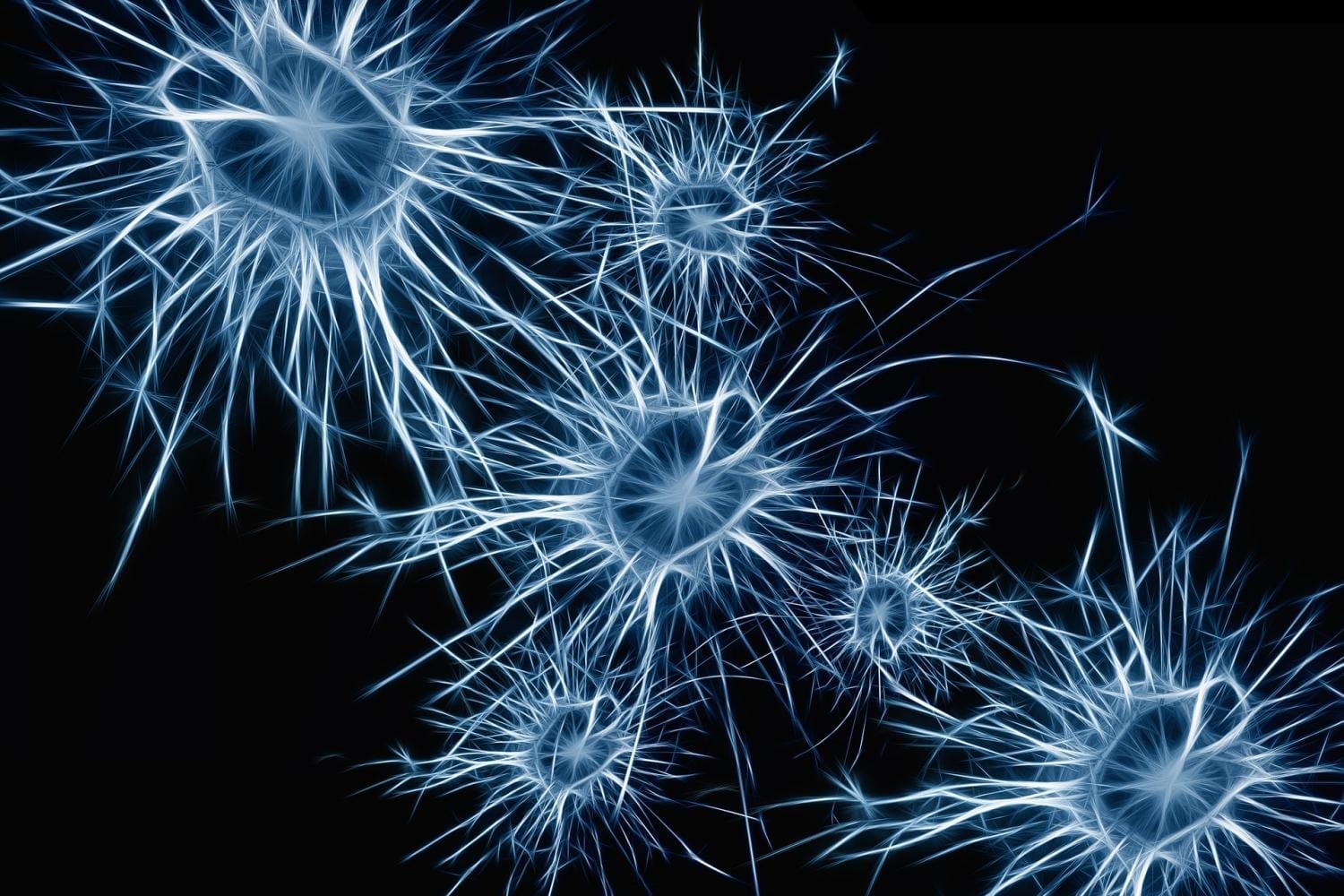
Researchers have developed a tiny nanolaser that can function inside of living tissues without harming them.
Just 50 to 150 nanometers thick, the laser is about 1/1,000th the thickness of a single human hair. At this size, the laser can fit and function inside living tissues, with the potential to sense disease biomarkers or perhaps treat deep-brain neurological disorders, such as epilepsy.
Developed by researchers at Northwestern and Columbia Universities, the nanolaser shows specific promise for imaging in living tissues. Not only is it made mostly of glass, which is intrinsically biocompatible, the laser can also be excited with longer wavelengths of light and emit at shorter wavelengths.
“Longer wavelengths of light are needed for bioimaging because they can penetrate farther into tissues than visible wavelength photons,” said Northwestern’s Teri Odom, who co-led the research. “But shorter wavelengths of light are often desirable at those same deep areas. We have designed an optically clean system that can effectively deliver visible laser light at penetration depths accessible to longer wavelengths.”
The nanolaser also can operate in extremely confined spaces, including quantum circuits and microprocessors for ultra-fast and low-power electronics.
The paper was published today (Sept. 23) in the journal Nature Materials. Odom co-led the work with P. James Schuck at Columbia University’s School of Engineering.
While many applications require increasingly small lasers, researchers continually run into the same roadblock: Nanolasers tend to be much less efficient than their macroscopic counterparts. And these lasers typically need shorter wavelengths, such as ultraviolet light, to power them.
“This is bad because the unconventional environments in which people want to use small lasers are highly susceptible to damage from UV light and the excess heat generated by inefficient operation,” said Schuck, an associate professor of mechanical engineering.
Odom, Schuck and their teams were able to achieve a nanolaser platform that solves these issues by using photon upconversion. In upconversion, low-energy photons are absorbed and converted into one photon with higher energy. In this project, the team started with low-energy, “bio-friendly” infrared photons and upconverted them to visible laser beams. The resulting laser can function under low powers and is vertically much smaller than the wavelength of light.
mechanical engineer
“Our nanolaser is transparent but can generate visible photons when optically pumped with light our eyes cannot see,” said Odom, the Charles E. and Emma H. Morrison Professor of Chemistry in Northwestern’s Weinberg College of Arts and Sciences. “The continuous wave, low-power characteristics will open numerous new applications, especially in biological imaging.”
Learn more: Tiny, biocompatible nanolaser could function inside living tissues
The Latest on: Biocompatible nanolaser
[google_news title=”” keyword=”biocompatible nanolaser” num_posts=”10″ blurb_length=”0″ show_thumb=”left”]
via Google News
The Latest on: Biocompatible nanolaser
- 9G servoon April 23, 2024 at 5:00 pm
As fun as claw games are, the jaws are always disappointingly weak, and you usually end up with bupkis. What if the jaws were completely within your control? That’s the idea behind [Upside ...
- Birth of the nanolaseron April 6, 2024 at 3:25 pm
Interestingly, the two nanolaser designs reported in Nature are strikingly different. The approach of Noginov et al. is to use a spherical cavity — a composite 44-nm-diameter nanoparticle (lower ...
- Purdue researchers create biocompatible nanoparticles to enhance systemic delivery of cancer immunotherapyon March 26, 2024 at 5:00 pm
Yeo and her colleagues used biocompatible polymeric nanoparticles to deliver immunotherapy compounds and modified them to safely activate the immune system. “We employed poly (lactic-co-glycolic acid) ...
- Nanolasers: Miniaturized Light Sources for Advanced Applicationson March 20, 2024 at 3:15 am
Optical Cavity: The optical cavity provides the necessary feedback for light amplification in a nanolaser. It confines the light emitted by the gain medium, allowing for multiple passes through the ...
- Affordable and Powerful Option for Creators: Longer Nano 12W Portable Laser Engraveron March 15, 2024 at 1:28 am
By incorporating advanced technology typically found in pricier models into a budget-friendly and user-friendly design, the Longer Nano laser engraver is primed to revolutionize the engraving ...
- School of Biomedical Engineeringon September 14, 2022 at 3:16 am
A unique combination of our original ideas in biomaterial design, sustainable and biocompatible engineering, and comprehensive fine-tuning of material properties from nano- to micro- and macro-scale ...
- Nanowire photonicson November 30, 2021 at 12:28 pm
Despite all the progress made in optically pumped nanowire lasing, realization of a reliable, electrically injected nanowire nanolaser 66 remains a major challenge, owing to issues such as the ...
- Biocompatible / Biomaterial Stainless Steel Alloyson August 13, 2020 at 5:19 am
Arnold ’s Precision Thin Metal business provides many types of high quality stainless steel, rolled to precise tolerances for thinness and flatness. Its excellent corrosion resistance and good ...
- Biocompatible Polymers and Plastic Resinson February 19, 2018 at 6:24 am
PolyBlend is a family of exceptionally soft, aromatic polyurethane elastomeric alloys, which can be used as a substitute for natural rubber or latex in many applications. These polymers encompass ...
- Nanotechnology for surgeryon September 26, 2017 at 8:02 am
The medical field is also getting closer to achieving the ideal graft – biocompatible and durable replacements for parts of the body such as arteries, joints, and even organs. These replacements not ...
via Bing News










